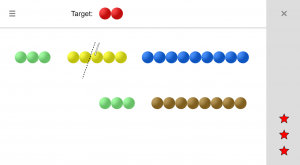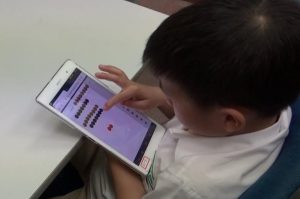Why Singapore’s English Teachers Should Embrace Singlish, Not Fight It
Is it time for Singaporean educators to embrace Singlish as a legitimate learning tool? What the Research […]
Read More
The iMAGINE project was motivated by the trend over the past two decades which showed a consistent 15% of students who were unable to obtain a pass (C grade and above) for their Primary School Leaving Examination (PSLE). The iMAGINE project addresses this matter of mitigating challenges in mathematics learning, especially for learners who continue to struggle despite multi-pronged behavioural interventions in schools.
Significance of the iMAGINE project
This study involves the characterization of individual differences in low-progress and at-risk math. This helps us to understand the connection between behavioural, emotion regulation and brain functions with implications on tailoring relevant interventions to bridge the achievement gaps and predict mathematics dysfunction before it compounds into future lifelong struggles.
Theory and key findings
Theory: This study is grounded in digital game-based learning and cognitive neuroscience in addressing low-progress math achievement.
Key findings: Neural-informed digital games show promise in mitigating challenges faced by mathematics learners by improving their accuracy and fluency in solving math questions.
Phase 1: Characterization of underlying behavioural & neural mechanisms
This involved the assessment of core competencies involved in early math learning and development, such as executive functioning (i.e. working memory, flexible thinking and self-control), the ability to estimate and compare the sizes of numbers, and socio-emotional factors such as math anxiety. Brain activity was also examined using neural-imaging equipment and techniques.
Phase 2: Intervention using neural-informed digital games
A digital game, Number Beads (Laurillard, 2016) was implemented, targeting students’ foundational numeracy development concepts such as “numbers as sets”.
Both phases of the research were carried out in classroom settings with interviews conducted with the teachers to understand the impact on math learning of the participating students.
(*A new neural-informed digital game, Fun Rods, was also developed targeting students’ understanding of Fractions.)
The Number Beads interface features a target set of beads located at the top of the screen, and the player is tasked to either split or join the sets of beads given in order to achieve the target (See Figure 1).
Figure 1. Screenshot of Number Beads interface to achieve Target of 2 beads
The players are able to explore different combinations on how to achieve the target set, and the game provides intrinsic feedback to help players work toward the target, by showing how a particular set of beads can be obtained from the set of beads given.


Benefits of Number Beads as a learning tool:
Significance I: Identifying and nuancing at-risk learning mechanisms of low progress math learner population
A strong link between cognitive and affective measures of executive functioning and anxiety with low math performance highlight the importance of rethinking:
A clear typology of underlying math struggles can help teachers:
Significance II: Research evidence on the efficacy of neural-informed games to remediate math numeracy struggles
Through randomized trials, positive impacts (improved accuracy and fluency) from the topical intervention on Number Sensing using the neural-informed game, Number Beads, has provided evidence for the use of games to help students who have been struggling with math concepts.
Significance III: Development of a neural-based theory of math learning, which is novel in mainstream Singapore schools
Little is known about the neural mechanisms that mediate acquisition of math competencies and mitigation of persistent math struggles.
This study found:
Expected future outcomes
The findings facilitate a more nuanced approach to identify specific mathematics learning difficulties from a heterogeneous sample of math at-risk children.
Type-specific interventions, can be co-designed, between researchers and practitioners to:
While the ‘science’ behind different brain interconnections might not have direct implications for the classroom as yet, this information is useful for:
In this study, the information is used to design, and test neural-informed math game-based interventions based on the respective hypotheses and inferences for intervention studies. The scientific information facilitated research that allows us to test for the ‘dose-response relationships’ (Goswami, 2008), that is, if a particular designed game shows reliable correlations with positive math performance, then receiving more (or less) ‘doses’ should increase the performance effect.
(*The research team is continuing the line of game-based intervention studies, through the PIs in other projects.)
How can teachers get started?
Teachers can email Asst. Prof. Azilawati Jamaludin at azilawati.j@nie.edu.sg or the project team at imagine@nie.edu.sg.
Additionally, here are some papers which teachers can read for more information regarding similar studies:
The following NIE projects are associated with iMAGINE
To learn more about this research, please contact the iMAGINE team at imagine@nie.edu.sg.
Principal Investigator
Asst. Prof. Azilawati JAMALUDIN, Learning Sciences and Assessment (LSA), Office of Education Research (OER), NIE
Co-Principal Investigators
Collaborators
Consultants
Researchers
This research was funded by the Singapore National Research Foundation (NRF) under the Science of Learning Initiative (NRF2016-SOL002-003). Any opinions, findings, and conclusions or recommendations expressed in this material are those of the author(s) and do not necessarily reflect the views of the NRF or NIE.
This knowledge resource was written by Asst Prof. Azilawati Jamaludin and Dr Tan Aik Lim, with input from Ms Monica Lim and Ms Lorraine Ow as of 15 July 2021; updated by Ms Monica Lim on 4 January 2022.